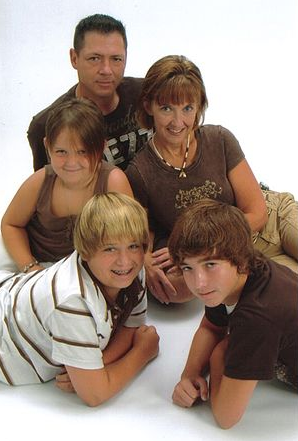Brothers and Sisters
 A family I know has several children, including Alex (male) and Betty (female).
A family I know has several children, including Alex (male) and Betty (female).
Alex has as many sisters as brothers but Betty has twice as many brothers as sisters.
What is the total number of children in the family?
Image Credit: Wikimedia Greeting card longoria .
This section requires Javascript.
You are seeing this because something didn't load right. We suggest you, (a) try
refreshing the page, (b) enabling javascript if it is disabled on your browser and,
finally, (c)
loading the
non-javascript version of this page
. We're sorry about the hassle.
12 solutions
Hi ! your solution is easy to understand Mr.Ankit Gupta
Thanks for the solution..
Thanks for solution
Thanks for the solution!!
no. of girls =x
no. of boys=y
from the first problem statement-
y-1=x
from the second-
2(x-1)=y
solving the linear equation in two variables-
x=3
y=4
therefore total no. of children =3+4=7
if anybody has a solution drawing a tree, using the same logic sentence i get the answer as 4.... I see how algebraically one gets 7
Thanks a lot Harsh Yadav.
First we have to consider that when any boy or girl compares his/her brothers with his/her sisters , he excludes himself /herself (during that comparison) from the group that he/she belongs to , be it brothers (boys) group or sisters (girls) group .
Then, Let the boys group be y and the girls group be x .
And when any boy compares his brothers (other boys) with his sisters (all girls) , he finds that the ratio is : y − 1 : x 1 : 1 This implies that : y − 1 = x , y = x + 1 ⇒ ( 1 ) And when any girl compares her brothers (all boys) with her sisters (other girls) , she finds that the ratio is : y : x − 1 2 : 1 This implies that : y = 2 ( x − 1 ) = 2 x − 2 Substituting in ( 1 ) : 2 x − 2 = x + 1 , 2 x − x = 2 + 1 , x = 3
Substituting in ( 1 ) again : y = x + 1 , y = ( 3 ) + 1 = 4
Therefore, y + x = 4 + 3 = 7 Which is the sum of the number of brothers (boys) and sisters (girls) .
Yours is the most detailed and deep explanation I've seen here. Good work.
Log in to reply
Thank you . I have only wanted to be clear as much as I can .
Yours is one of the most detailed explanations. Keep up the good work
It says 7 children in the beginning guys...
I believe it says "several," which might be percieved as seven if not read carefully.
b is the number of boys and g is the number of girls
Each boy has b - 1 brothers and g sisters Each girl has b bothers and g - 1 sisters
Therefore b -1 = g and g - 1 = b/2
=> b - 2 = b/2
=> b = 4
=> 4 - 1 = g = 3
b + g = 4 + 3 = 7
Result: 7
I thought alex has 4 bro and sis. so belly has 8.removing belly it is 7.
Let S be the total number of sisters and B be the total number of brothers
S=B-1
B=2(S-1)
S=B-1 --> B=S+1
S+1=2(S-1)
S+1=2S-2
1+2=2S-S
3=S
B=S+1
B=3+1=4 S=3; B=4 ---> S+B=7
1.Each boy has as many sisters as brother. 2.Each girl has twice as many brothers as sisters. Let total number of boys=x total number of girls=y then x-1=y. according to first statement. x=2(y-1) according to second statement. On solving both the equations. x=4 , y=3 x+y = 7
the sum of total is in first row..... it's so simpal pure logic.......
M = male, F = female
M - 1 = F and M = 2(F - 1) = 2F - 2
Therefore 2F - 2 - 1 = F so F = 3 and M = 4 and M + F = 7
From the perspective of a boy excluding himself, there are as many girls as there are remaining boys, or g=b-1. Likewise, from the perspective of a girl excluding herself, there are twice as many boys as there are remaining girls, or b=2(g-1). Doing the math:
b=2g-2
b=g+1 (First equation)
g+1=2g-2
g+3=2g
g=3
3+1=b=4
b+g=4+3=7
I took a slightly different logic It might be useful in competitive exams. Consider the no of girls as x thus according to first condition there are x+1boys. Totally2x+1 children. So the answer must be odd which brings down to option 5 or 7. But 5 cant be possible so the answer is 7
If each boy has as many brother as sisters, it implies, there are x girls, and x+1 boys (counting the one boy whose perspective is shown here). Now if, every girl has twice as many brother as sisters, it gives the equation: 2(x-1) = x+1
Solving for x, we get x=3. Thus, Girls = x = 3 Boys = x+1 = 4
Total = 3+4 = 7